|
On the 9th of April we co-hosted an interesting workshop at the University of Lagos – Department of Creative Arts. In the morning we were welcomed by a team at the Department of Creative Arts, led by Prof Duro Oni and Prof. Peju Layiwola and also by Prof. Muyiwa Falaiye, Dean of the Faculty of Arts. The Department of Creative Arts provided a very engaging landscape to the event with plenty of art works and music bursting out of the venue. The event took place also thanks to the support of King’s Worldwide Partnership Fund and the Faculty of Arts & Humanities at King's College London In the morning after a brief presentation about the project and higher education and the creative economy collaborations by Dr Roberta Comunian (King’s College London) we engaged in discussion on the local context of Lagos and Nigeria.
Maria Williams provided input from the British Council Nigeria’s activities in relation to higher education and their report on the sector. Participants highlighted the difficulties in sometimes being heard by policy and policy makers but also acknowledged the importance of forming groups and larger networks to make themselves visible. After a lovely traditional Nigeria lunch, we focused our discussion on education and creative careers in Nigeria/Lagos facilitated by Lauren England (King's College London) and discussed how universities connect with the creative sector via student placements and common curriculum development opportunities. The final research discussion around universities, research and the creative economy led to the importance of universities making their work more available to the outside and establishing long-term collaborations with the sector. This led to the introduction of Dr. Patrick Okonji from the Research & Innovation office, who explained to our participants the opportunities available to establish a Research Centre within the University of Lagos around the creative economy. The day concluded with a visit to the Department of Arts art gallery as well as the Entrepreneurship & Skill Development Centre located close to the Department of Arts. We were showed around by the director of the Entrepreneurship and Skills Development Centre Ass Professor Sunday Abayomi Adebisi. Finally, our research team and hosts from the Department of Arts where able to meet with Vice-Chancellor, Prof. Oluwatoyin Ogundipe to seek his support towards promoting an ARUA (African Research University Association) Centre of Excellence around the arts and creative economy. Report written by Dr Roberta Comunian and Lauren England; Photos by Dr Roberta Comunian, Lauren England and Prof Duro Oni.
0 Comments
Our research team will be visiting South Africa (Cape Town) in June 2019 and holding a research forum at the District 6 Museum in Cape Town on the 4th of June 2019 in partnership with SACO: South African Cultural Observatory
Lauren England (PhD Candidate, King's College London) is continuing to look and map craft spaces across Africa. This includes markets, craft centres and galleries, potteries, community workshops and network organisations.
In the map below she is starting to collect data about Nigeria, where we will conduct our first fieldwork in April 2019. If you know of any other places that should be included on this map please send us the name and location (as precise as possible) using the contact form below. In Nairobi, the most critically acclaimed filmmakers – both directors and producers are women, a remarkable fact considering the dramatic underrepresentation of female filmmakers in film industries globally. For instance, the British Film Industry’s 2018 Statistical Yearbook notes that women directed only 16% of UK films released in 2017, and Marth M. Lauzen’s most recent “Celluloid Ceiling” report documents that women were directors of only 11% of the top 250 grossing films of 2017 in America. Studying the exceptionalism of Nairobi’s female filmmakers is all the more important given this global context of the marginalisation of women in key filmmaking positions.
When I first heard about these filmmakers I was so excited I decided to set off on a PhD to study them. I had seen the films of Wanuri Kahiu, Judy Kibinge, Ng’endo Mukii, and Hawa Essuman at film festivals and was keen to focus on these auteurs and their fantastic films. Like many a film scholar before me I imagined watching their films in careful detail and interviewing their directors. Like many scholars before me, all my plans went out the window when I started my field research. Eight months in Nairobi and 30 interviews later I had an entirely different understanding of these filmmakers and the industry in which they work. I found that far from a movement of auteur directors with success on the international film festival circuit, Nairobi’s female filmmakers are a movement of entrepreneurial hustlers. Yes, they direct films that play on the most prestigious silver screens, like Wanuri Kahiu’s latest film Rafiki that premiered at Cannes. But they do so much more than this and as it turns out, all this other activity is central to their success. Take Judy Kibinge for example. She has directed several films, including Something Necessary, which screened at the A-list Toronto International Film Festival, but her career has included so much more. She runs the film fund Docubox, has produced her own films, made corporate films, and made incisive political documentaries like Scarred: the Anatomy of a Massacre, among many other projects in a career spanning 20 years. Knowing this, it becomes increasingly untenable to segregate her directorial projects from the rest of her work. Considering all these aspects of her career is essential to understanding how any of her films are made and circulated. Thinking of Kibinge as an ‘entrepreneur’ rather than ‘director’ opens up a new window to understanding her experience. Convention dictates that a filmmaker must start out producing minor works like short films and commissioned work as they build their way up to the top job of feature film director. Once that apex is achieved the rest of the work stops mattering. But if we focus only on the apex – like I was when I started my research – we see only a handful of women and frame the participation of other women as relatively unimportant. The careers of Nairobi’s female filmmakers - from the most established to rising stars – are marked by an ability to flexibly shift between industry segments as opportunities arise. They may move between producing high quality television for cross continental broadcasters, producing lauded ‘festival’ films, to working in extremely low budget modes, or pursuing commissioned projects for the likes of the city’s many development agencies. It would be impossible for them to sustain a career in only one niche and unlikely that they would be able to realise their most creative and daring projects. But because they can move flexibly through this market they can create innovative art works and sustainable careers. Women direct far fewer films than their male counterparts globally, but focusing only on directorial work can obscure the true presence – and significance – of women in film industries. The case of Nairobi’s female filmmakers shows us it is necessary to consider filmmakers much more holistically and include the full scope of their work. Once we do this, we will have a better appreciation of women’s work in filmmaking. Robin Steedman is a Creative Economy Engagement Fellow at the University of Sheffield. Her work on Nairobi’s female filmmakers appears in the edited collection A Companion to African Cinema (Wiley Blackwell 2019) and the journal Poetics (doi: 10.1016/j.poetic.2018.11.002). Reach her at [email protected] Q: Can you tell us a bit about your career and the connection it has with the Creative Economy in Africa? A: I have worked as a practitioner in the print media and as media advisor for an international development organisation in the Republic of Uganda and United Republic of Tanzania, respectively. I am co-founder and Executive Director of Culture and Development East Africa (CDEA), a creative think tank in Dar es Salaam, Tanzania. CDEA was incorporated in October 2011 to provide cultural and Pan-African thought leadership for creative, social and scientist innovators to create and innovate through structured workplace learning, incubation, research & advocacy and capacity building for social change. It also innovates on how space can be used to enhance sustainable workplace productivity and green community lifestyles. I was a member of the UNESCO Expert Facility (2015-2017) and am currently a member of the EU/UNESCO Expert Facility (2018-2022) for the 2005 Convention. I am also a steering committee member of African Cultural Policy Network (ACPN). From 2014-2017, I managed a research project titled: ‘Research In Culture And Creative Industries Focusing On The Film And Music Sub-Sectors Contribution To Creative Economy In Tanzania And EAC Common Market’, whose findings fed into the two annual Mashariki Creative Economy Impact Investment Conferences in 2017 and 2018 respectively, which I also curated. I have designed CDEA’s Creative Economy Incubator and Accelerator Initiative which was launched in November 2016, targeting East African fashion and accessories designers, filmmakers and musicians from Uganda and Tanzania. Q: You have recently started a new PhD project in connection with the creative economy in Africa could you tell us about the project and what you want to achieve? A: I am currently a PhD student in Media and Communication Research in the University of Leicester, School of Media, Communication and Sociology, hosted by CAMEo. My PhD is taking practice as a research approach to establish if creative entrepreneurs in selected creative hubs in the East African cities of Dar es Salaam, Nairobi and Kampala integrate Sustainable Consumption and Production (SCP) objectives in their production and manufacturing processes and urban regeneration activities. The research will establish if there is co-relation between national cultural and urban policies and the industrialisation development agendas of the Republic of Kenya, United Republic of Tanzania and Republic of Uganda. The study will frame policy recommendations that offer opportunities for creative entrepreneurs in the design sector to be able to contribute towards a circular economy and the urban regeneration of the three East African cities. Q: What do you think are the main challenges faced by creatives operating from Africa countries (you can talk here specifically about the countries you are familiar with)? A: The research carried out by CDEA highlights the key challenges facing the creatives in Tanzania and other East Africa countries, and can be summarised under the following framework conditions: • Financial Framework Conditions: Most of creatives run micro businesses that are not bankable because they are considered high risk. In addition, there are no guarantee financial systems targeting creative industries. • Industrial Framework Conditions: Creative content producers in Tanzania and wider the East Africa region are at the precursor and embryonic stages of industrial development, with limited incentives and capacity support to stimulate industrial growth. • Market Framework Conditions: There is a market for creative products such as film and music in Tanzania, but they controlled by telecoms and broadcasters and aggregators, with limited trickledown effect to the creatives. • Cultural Framework Conditions: There are clusters for creative and cultural industries that are mostly privately organised. However, in Tanzania, the National Arts Council-BASATA has played a pivotal role in clustering the artists under four arts federations namely; art and craft, film, music and performing arts. Knowledge Framework Conditions: There is limited knowledge development (research) for the creative economy in the East African countries. Most of the creatives are self-taught and hardly rely on formal knowledge for their development. • Regulatory and Policy Framework Conditions: There is a weak copyright management framework, with the broadcasters in East Africa as the biggest copyright infringers since they do not pay royalties to the digital content creators. Instead, they ask the content creators to look for advertisers who can cover the cost of broadcasting time. • Support Framework Conditions: No policy measures to support creative startups to stimulate innovation, unless they are linked to social sectors such as health, water and education. Mobility funds are limited which hinders opportunities for creatives to network. Celebrating CDEA's Fashion Bootcamp combining leather and Kanga, local fabric associated with East Africa.
Photos courtesy of Ayeta Wangusa  We would like to invite you to contribute to a special session we are organising as part of the next RGS-IBG Annual International Conference in London (28 - 30 August 2019). The detailed call for paper is here below. If you are interested in submitting a research paper or a policy case study, please email the following information by the 31st January 2019 to [email protected]: TITLE of paper, AUTHOR(S) and ABSTRACT. CALL FOR PAPERSIn recent years there has been a growing interest in the role that cultural and creative industries (CCIs) play in the Global South- in terms of their economic contribution and connections to social change and cultural engagement (UNESCO, 2013). To contribute to this field and to support related policy agendas, this special session aims to bring together international researchers and policy makers engaged with understanding or developing creative economies in Africa. It aims to engage with the following research questions: what role can CCIs play in the development of African countries? What challenges and opportunities emerge with the development of CCIs in Africa? What role can policy (national and international) play in this context? The session (or sessions) will also feature a discussant to enable critical reflection on current research and policy initiatives. To explore these questions in greater detail, this session welcomes papers from diverse conceptual, empirical and geographical perspectives which engage with the following and related themes:
Special Session organisers:
Dr Roberta Comunian, Reader in Creative Economy, Department of Culture, Media and Creative Industries, King’s College London. Dr. Brian J. Hracs, Lecturer in Human Geography, Geography and Environment, University of Southampton The research question It is increasingly recognised that the cultural and creative industries (CCIs) can play an important role in economic growth and development. Governments around the world, including South Africa, are implementing culture-led economic growth and development strategies on national and regional scales. CCIs tend to cluster around large cities because of existing hard and soft infrastructure such as networking advantages and access to skilled labour, however, much less is known about the potential of the CCIs to drive rural development. Using mapping techniques and indicators, we investigated the relationship between the CCIs and socio-economic development in a more rural area of South Africa. The research context The Regional Government of the Sarah Baartman District (SBD) of South Africa’s Eastern Cape has identified culture as a potential new economic driver. Establishing a new development path is necessary as the former economic mainstay, agriculture, has declined in the region creating poverty and unemployment problems. However, the SBD has only small towns which, according to the literature, are not suited to CCI clustering. Despite this, there is evidence of cultural clustering in some of the SBD’s small towns like Nieu Bethesda and Bathurst. Methods used We conducted an audit of the CCIs in the district and used geographic information systems (GIS) to map their locations. We used the UNESCO Framework of Cultural Statistics (FCS) domains in order to group the CCIs, and location quotients to investigate the extent to which clustering has occurred in small town settings. To investigate the relationship between CCI clusters and development, we used census data to construct an index of the socio-economic status (SES) of each municipality within the District, and ranked them from most to least developed. Using GIS, information on the number and distribution of CCIs was overlaid with the SES index ranking. The results The audit identified 1 048 CCIs operating in the district and determined that clustering is possible within some small towns, depending on their demographic, economic, social, geographic and historic characteristics. Visual Arts and Crafts and Cultural Heritage were prominent throughout the district while Design and Creative Services and Performance and Celebration had small regional concentrations. 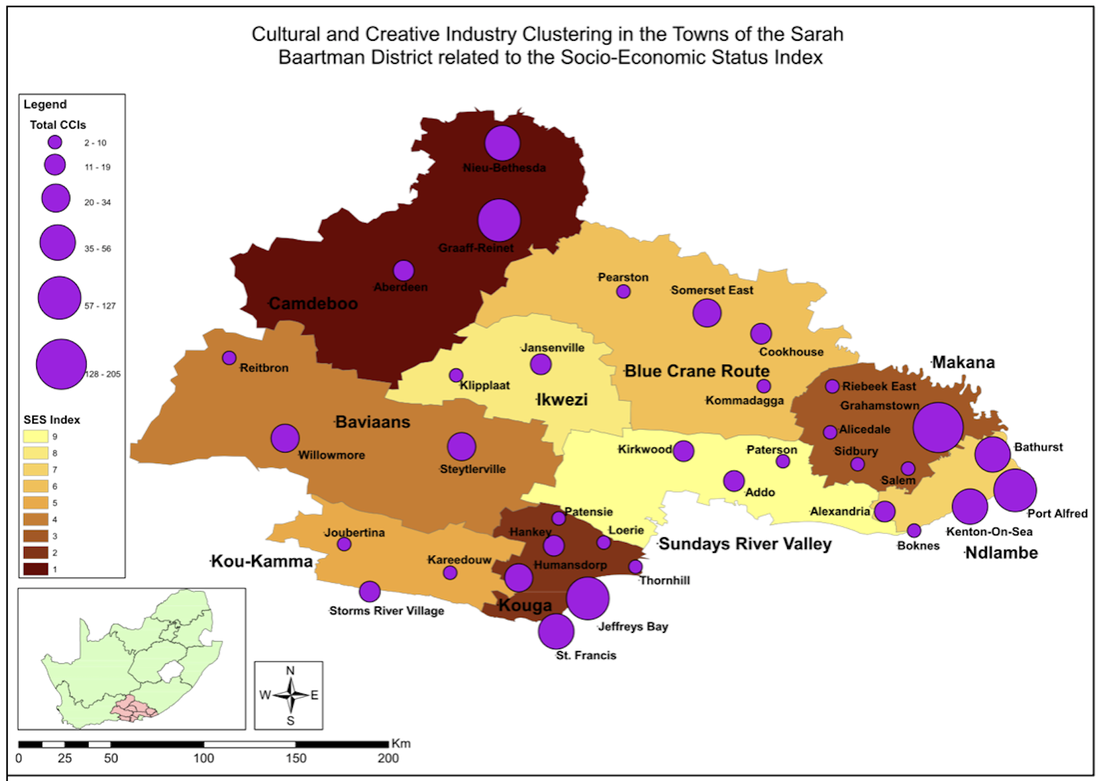 Examining the relationship between socio-economic development and the presence of the CCIs showed a general positive relationship between CCIs locating in larger numbers (clustering) in areas with higher socio-economic development. The direction of causality cannot be determined without data over a longer time period, but it may be that a threshold level of socio-economic development is needed before the CCIs can begin to cluster and drive the ‘virtuous cycle’ of growth and development. Implication for practice The research showed that cultural clusters can form in more rural, small-town areas, and that the presence of the CCIs is linked to better socio-economic development levels. For small towns where clusters exist, or the potential for cluster formation is present, the domains in which the town holds a comparative advantage should be pursued for local economic development (LED). However, with limited resources, effective regional cultural policy needs to build on existing cultural clusters and take into account the specific domain and locational characteristics of that region or town. The first step in the development of good regional cultural policy is thus a comprehensive cultural mapping exercise to determine which cultural domains are represented and where they are located. The researchers acknowledge the financial support of the South African Cultural Observatory, which is a research organisation funded by the South African Department of Arts and Culture. Copyright for all maps is held by Fiona Drummond and a copy of her Masters thesis will be available shortly on the Rhodes University Library Website. In this blog Lauren England (PhD Candidate, King's College London) focuses on the themes that emerged from the literature on two forms of craft production in Nigeria – ceramics and textiles – and their role in both micro-enterprise development and in industrial manufacturing.
Craft is an interesting discipline as it spans both artistic and industrial production and can combine creativity, design, science and technology. There is a long history of utilitarian craft production in Nigeria following a traditional small to medium enterprise production model. Key themes that have emerged from the literature on craft production in Nigeria are:
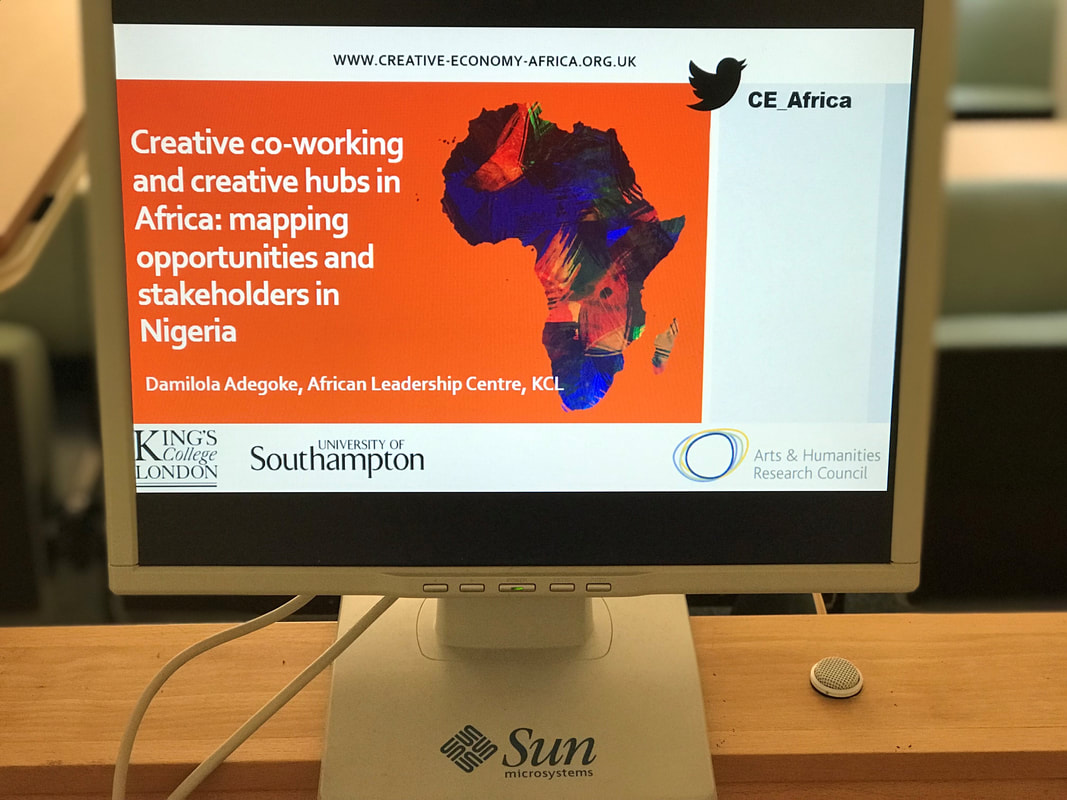 Damilola Adegoke attended and presented a paper at the last RGS-IBG conference in Cardiff. He presented early results from some fieldwork undertaken in Nigeria on co-working spaces. The paper entitled "Creative co-working and creative hubs in Africa: mapping opportunities and stakeholders" was presented as part of a special session on The geography of creative industries revisited: creative work, social innovation and co-working organised by Dr Roberta Comunian and Dr Waldemar Cudny (University of Lodz, Poland).
We are currently looking into co-working spaces and creative hubs Nigeria (with specific focus on the capital, Lagos)
|
Network Research BlogThe blog aims to collect ideas, reflections and updates from researchers working on creative economies in Africa. If you are interested in contributing please get in touch via our contact form Archives
September 2021
Categories
All
|
||||||
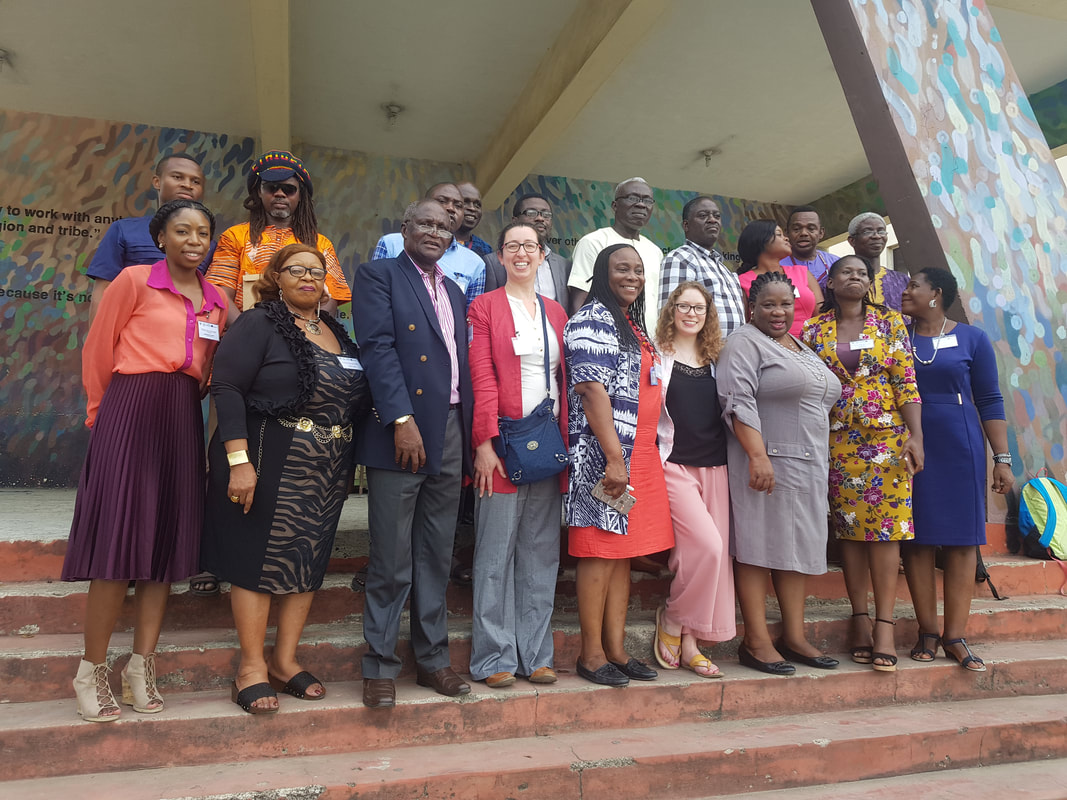
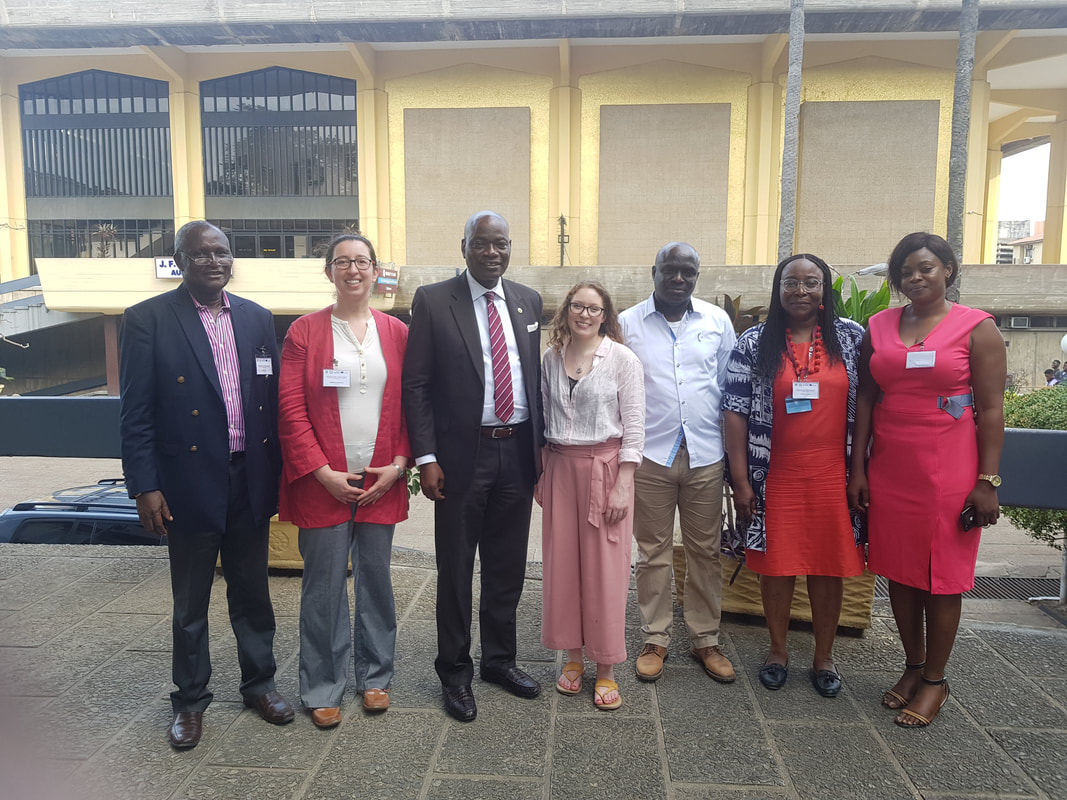
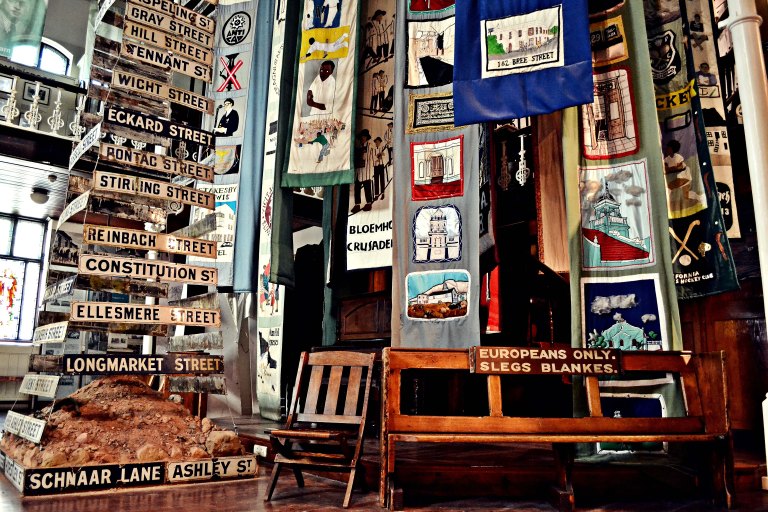
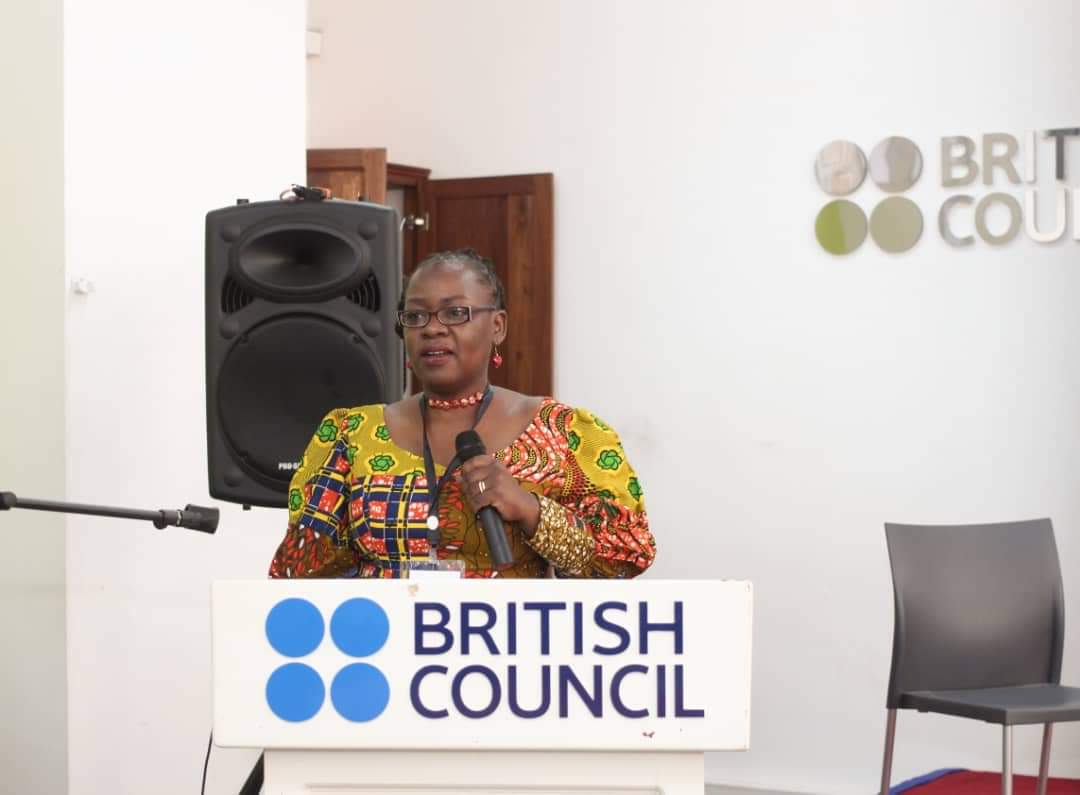


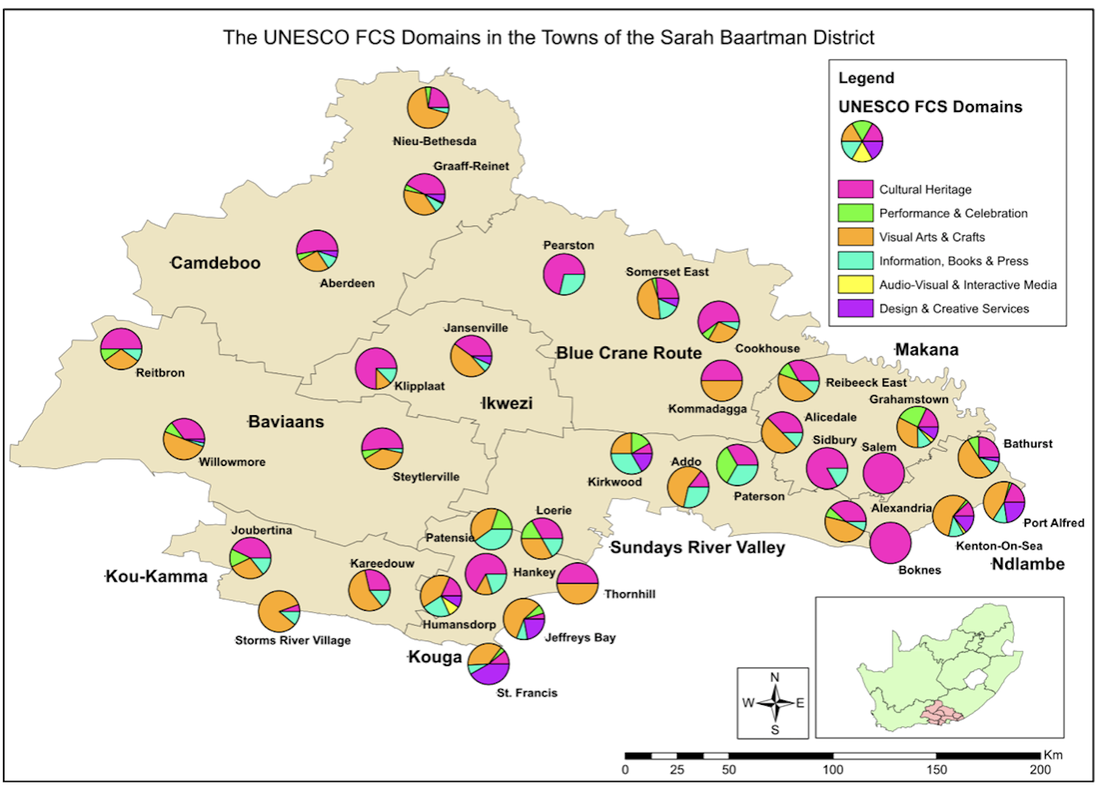
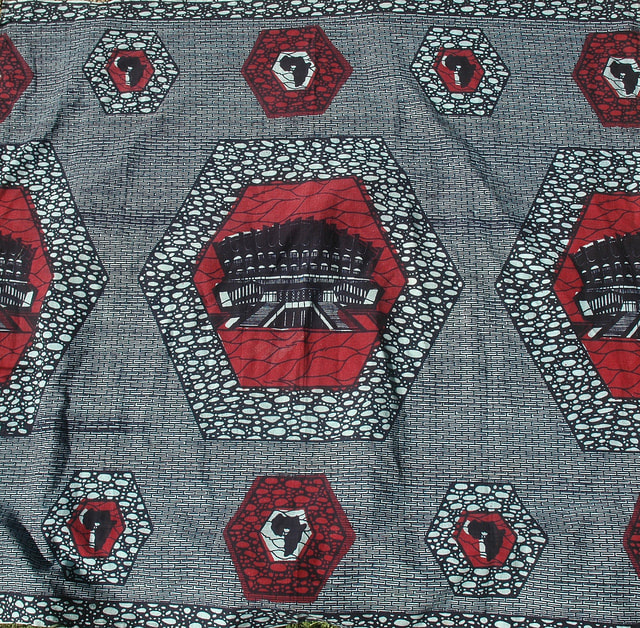
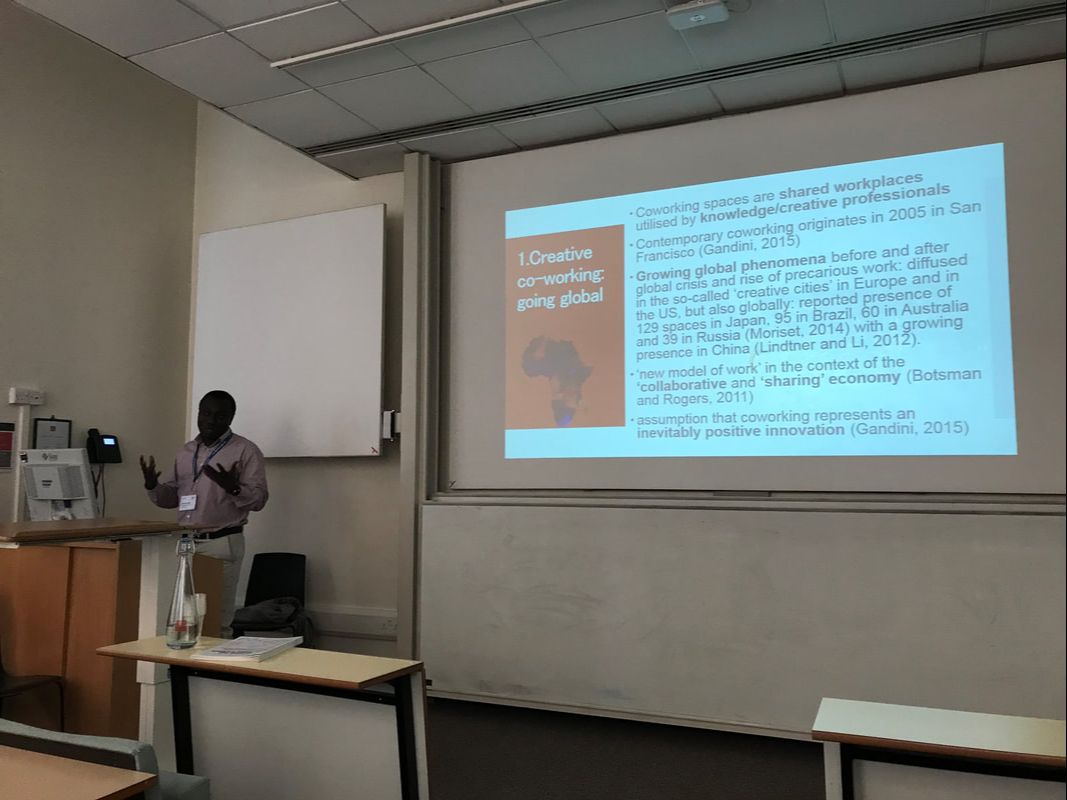
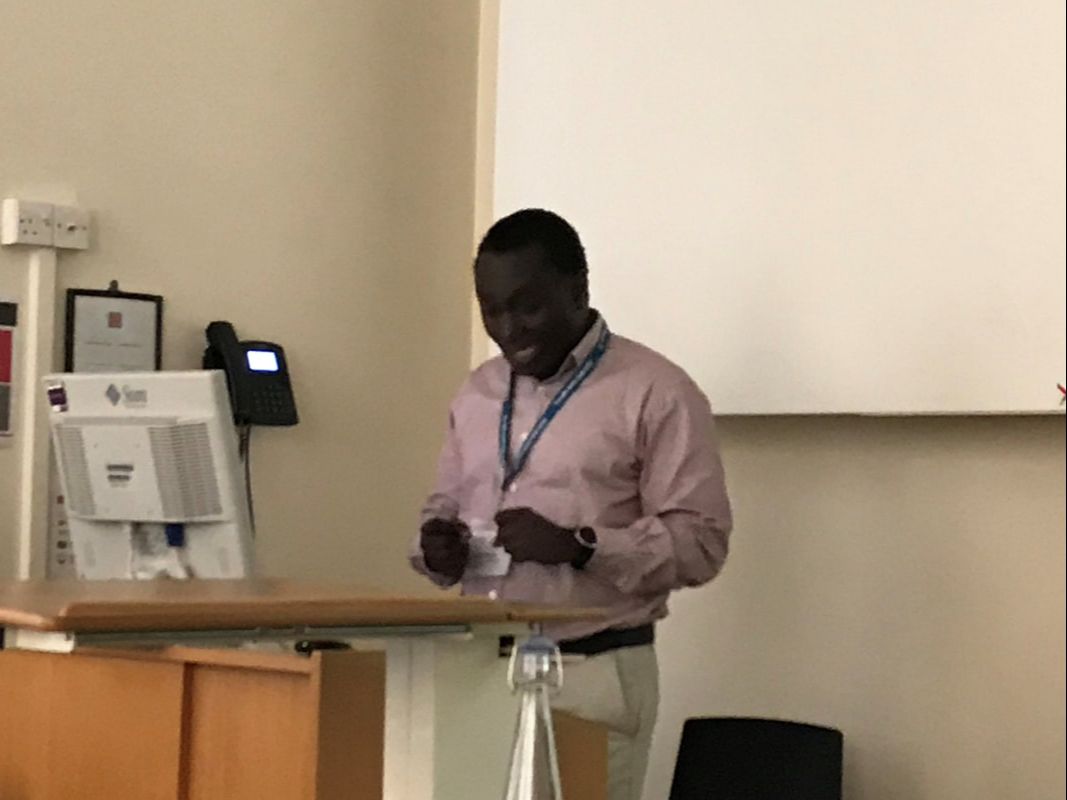
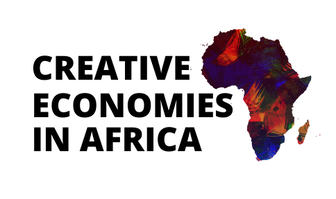
 RSS Feed
RSS Feed




